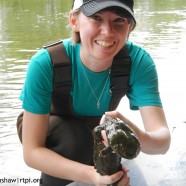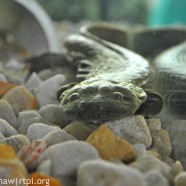Chasing Hellbenders
It’s a beautiful sunny morning when I join biologists, students and techs from the University of Buffalo and NYS DEC to evaluate a stream for a particularly unique species of amphibian. We dawn our waders and lug our equipment to the water’s edge. The water is still relatively cool and is rolling over the rocky bottom of the river in which we enter. With nets in hand and special poles used to lift large rocks, we begin to evaluate the stream bottom for suitable places a secretive salamander might live. As we find a massive rock along the river floor, we surround it as it is...
Read MoreWe Didn’t Find Anything…And That’s a Good Thing!
After two months of intensive winter survey work, we found nothing. However, that’s precisely the result we wanted. As you’ve probably seen or heard, this past winter we surveyed several sites throughout the area looking exclusively for Hemlock Woolly Adelgid (HWA), an invasive insect that puts all Eastern Hemlock trees (Tsuga canadensis), the habitats they make up and the wildlife they support at risk. This particular pest is minute, but can bring a tree to its death within a matter of 3-5 years if left unchecked and untreated. In response to this, several organizations, state...
Read MoreNEPARC Annual Meeting
Last week I got the opportunity to attend my first NEPARC (Northeast Partners in Amphibian and Reptile Conservation) annual meeting held at Allegany State Park in Salamanca, New York. For those that aren’t familiar with the not for profit, NEPARC is a regional subset of PARC or Partners in Amphibian and Reptile Conservation. This organization forms inclusive partnerships with like-minded professionals and citizens that are dedicated to the conservation of amphibians, reptiles and their respective habitats throughout each region of the United States and beyond. PARC interacts with...
Read More






